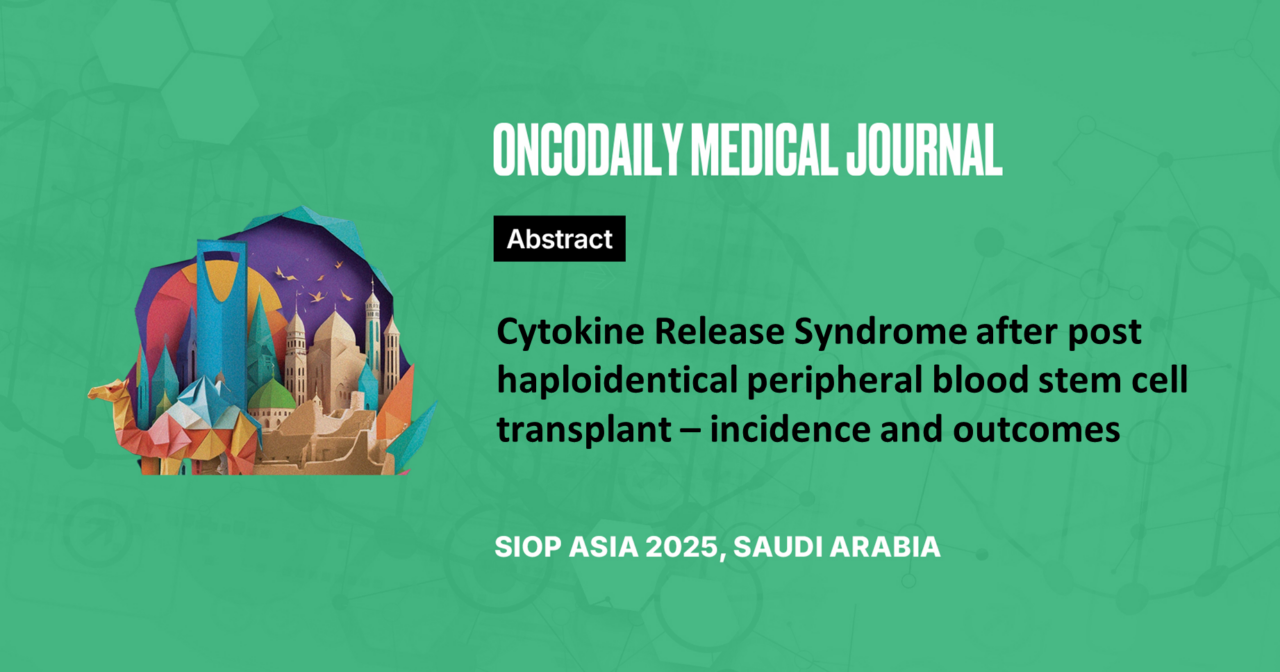Cytokine Release Syndrome after post haploidentical peripheral blood stem cell transplant – Incidence and outcomes
Abstract
Introduction: Post-transplantation cyclophosphamide (PTCy) has become an increasingly utilized platform for performing T cell replete haploidentical hematopoietic stem cell transplant (HSCT). Cytokine release syndrome (CRS) after the infusion of stem cells occurs in approximately half of the patients however severe CRS is rare. Here we report our experience with CRS after haploidentical HSCT using PTCy, along with an analysis of potential risk factors.
Methodology: A retrospective review of patients who underwent haploidentical HSCT with myeloablative conditioning with PTCy, and peripheral blood stem cells as a source , between October 2021 and August 2024 was done. Diagnosis of CRS required the presence of fever in the absence of infection in the first 5 days after stem cell infusion and was graded according to the ASTCT criteria.
Results: The median patient age was 6.5 (4-10) years, and 3 were female. 8 patients had malignant diseases and 6 had non-malignant diseases. Median donor age was 33 years (28-36) with all being 1st degree relatives. Fever was the commonest manifestation of CRS in 92% . Other manifestations were chills, tachycardia and hypotension. Grade 1/2 CRS and Grade 3/4 CRS occurred in 10 ( 71.4%) and 4 (28%) patients, respectively.
The median time to onset and resolution was 12 hrs and 72 hours, respectively. Three patients required vasopressors and tocilizumab was used in 3. None of the patients died due to CRS. Graft Failure was seen in 4/10 (40%) Grade 1/2 CRS compared to 1/4 (25%) in Grade 3/4 CRS. Moderate to severe chronic GVHD was seen in 75% Grade 3/4 CRS while 14% in Grade 1/2 CRS.
Conclusion: CRS occurred in all patients post PBSC infusion mostly being Grade 1/2. With good supportive management and rational use of tocilizumab our patients had good outcomes.





